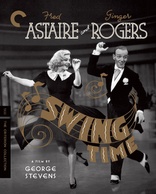Swing Time Blu-ray Movie
HomeSwing Time Blu-ray Movie 
Criterion | 1936 | 103 min | Not rated | Jun 11, 2019Movie rating
7.6 | / 10 |
Blu-ray rating
| Users | 0.0 | |
| Reviewer | 4.5 | |
| Overall | 4.5 |
Overview
Swing Time (1936)
A performer and gambler travels to New York City to raise the $25,000 he needs to marry his fiancée, only to become entangled with a beautiful aspiring dancer.
Starring: Fred Astaire, Ginger Rogers, Victor Moore, Helen Broderick, Eric BloreDirector: George Stevens (I)
| Romance | 100% |
| Musical | 36% |
| Comedy | Insignificant |
Specifications
Video
Video codec: MPEG-4 AVC
Video resolution: 1080p
Aspect ratio: 1.37:1
Original aspect ratio: 1.37:1
Audio
English: LPCM Mono (48kHz, 24-bit)
Subtitles
English SDH
Discs
Blu-ray Disc
Single disc (1 BD)
Playback
Region A (locked)
Review
Rating summary
| Movie | 4.5 | |
| Video | 4.0 | |
| Audio | 4.5 | |
| Extras | 4.0 | |
| Overall | 4.5 |
Swing Time Blu-ray Movie Review
Reviewed by Dr. Svet Atanasov July 24, 2019George Stevens' "Swing Time" (1936) arrives on Blu-ray courtesy of Criterion. The supplemental features on the disc include archival interviews with cast and crew members; archival audio commentary by author John Mueller; and more. The release also arrives with an illustrated leaflet featuring an essay by critic Imogen Sara Smith, as well as technical credits. In English, with optional English SDH subtitles for the main feature. Region-A "locked".
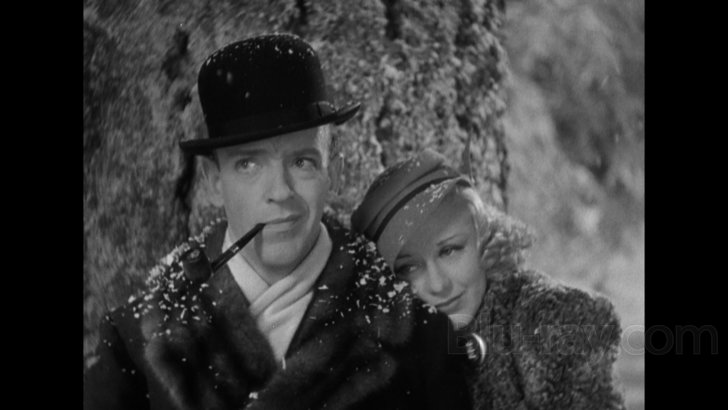
An almost perfect romance
With enough practice work the dancers can get all the correct steps, even the exact rhythm with which their bodies are supposed to move, and their performance will look right. It will just take time. There is something different that Fred Astaire and Ginger Rogers do in Swing Time and it is the reason why the film is so special. Allow me to explain:
Consider the sequence where their characters, Lucky Garrett and Penny Carroll, do a quick number before the manager (Eric Blore) of the dance school in New York. Your immediate reaction is “wow, they are really, really good together”. But you also sense that the dancing looks good because they both trust their instincts and are just doing the correct steps, as best as they can. This is exactly how it is supposed to be, correct? They have never danced before. Now consider this: The entire sequence is very carefully choreographed not to look ‘perfect’. In other words, the momentary hesitation that you quickly spot as Lucky swings around is intentional, and so is Penny’s slightly mistimed follow up. It is all done by design, though the entire dance appears entirely spontaneous. Now consider the big “Waltz in Swing Time” with Ricardo Romero’s (Georges Metaxa) band performing in the back. It is a very different type of ‘impromptu’ dance, and once again you can instantly tell because now the spins are far more confident and the rhythm of the moving bodies a lot more precise. The point is, you are not just seeing the improvement in the dancing, you are also sensing the improvement of the chemistry between Lucky and Penny, which is again by design. This is what makes Swing Time such a great film, it merges incredible dancing with incredible acting and makes it look completely organic.
During the misery times of the Depression these incredible performances must have looked and felt like pure magic as well. To marry Margaret (Betty Furness), the girl he is convinced he has fallen in love with, Lucky heads to New York to earn the $25,000 that will prove to her father that his intentions are serious. What Lucky really is trying to prove, however, is that he is in control of his life, and that magic can be part of it if he gives it a chance. Think about how simple yet so profound this message is – your future is in your hands, and it can be special if you believe in it. Couple this message with the great things that Astaire and Rogers do in front of the camera and it is very easy to understand why Swing Time became such a massive box office hit. During a time of unbearable misery and despair, the film offered escapist entertainment that actually gave people hope that there was something better ahead of them.
Something very important that is quite easy to downplay, or even completely ignore, is the quality work that various supporting actors do. Victor Moore’s Pop Cardetti, for instance, does not just complement Astaire’s gambler-dancer. There a number of different sequences where very effective contrasts emerge because of him. Elsewhere, Mabel Anderson’s receptionist also does little things that add credibility to the blossoming romance between the two dancers. The guys that force Lucky to miss the wedding reception in the very beginning of the film are also great.
The film won one Oscar Award for Best Music, Original Song (“The Way You Look Tonight”), and while it is certainly deserved, it feels like it deserved one for Best Dance Direction even more. Simply put, out of all the films that Astaire and Rogers did together there is just something extra-special about their work here.
*The original camera negative for Swing Time is lost. This recent release from Criterion is sourced from a 2K restoration that was completed from the best surviving elements, two 35mm fine-grains and a 35mm duplicate negative.
Swing Time Blu-ray Movie, Video Quality 
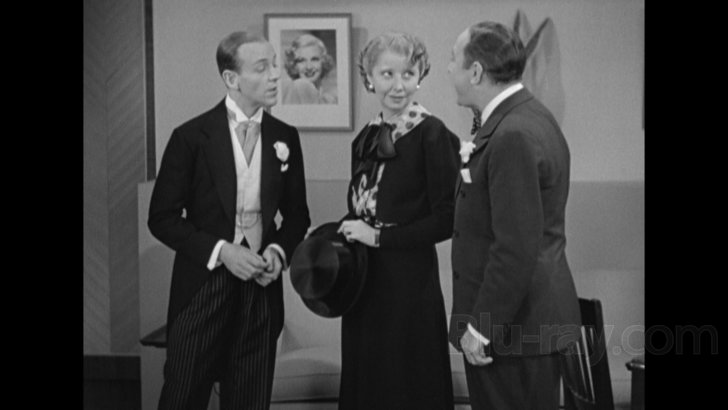
Presented in its original aspect ratio of 1.37:1, encoded with MPEG-4 AVC and granted a 1080p transfer, George Stevens' Swing Time arrives on Blu-ray courtesy of Criterion.
The following text appears inside the leaflet that is provided with this Blu-ray release:
"This new digital transfer was created in 2K resolution on a Lasergraphics Director film scanner from two 35mm fine-grains and a 35mm duplicate negative. The original camera negative has long been lost. Thousands of instances of dirt, debris, scratches ,splices, and warps were manually removed using MTI Film's DRS, while Digital Vision's Phoenix was used jitter, flicker, small dirt, grain, and noise management. The original monaural soundtrack was remastered from a 35mm fine-grain. Clicks, thump, hiss, hum, and crackle were manually removed using Pro Tools HD and iZotope RX.
Film scanning: Warner Bros. Motion Picture Imaging, Burbank, CA.
Colorist: Lee Kline."
It is easy to tell that the restoration was completed from surviving elements that are at least a generation away from the OCN because the density levels are not optimal. Also, there are areas where time has left its mark as well, so some density fluctuations are fuhrer exacerbated. This said, the end product is still solid and with good organic qualities. It is just that overall the visuals have a slightly softer appearance and in certain areas nuances are not optimal. The grading is very convincing; fluidity is also surprisingly good. Debris, scratches, stains, and other similar conventional age-related imperfections have been removed as best as possible. (Note: This is a Region-A "locked" Blu-ray release. Therefore, you must have a native Region-A or Region-Free player in order to access its content).
Swing Time Blu-ray Movie, Audio Quality 
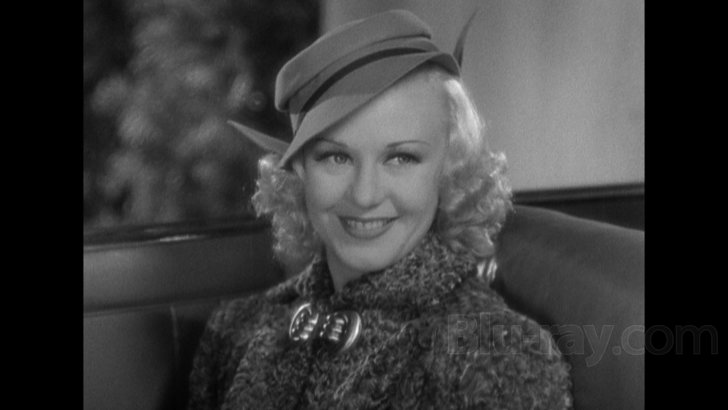
There is only one standard audio track on this Blu-ray release: English LPCM 1.0. Optional English SDH subtitles are provided for the main feature.
The audio is clear and stable. I felt that there are a couple of areas -- for example Astaire's solo dance around the 01.20.00 mark -- where the music does sound a tad 'tinner' than it should, but considering the history of the film the overall quality of the audio is indeed very good. There are no encoding anomalies to report.
Swing Time Blu-ray Movie, Special Features and Extras 
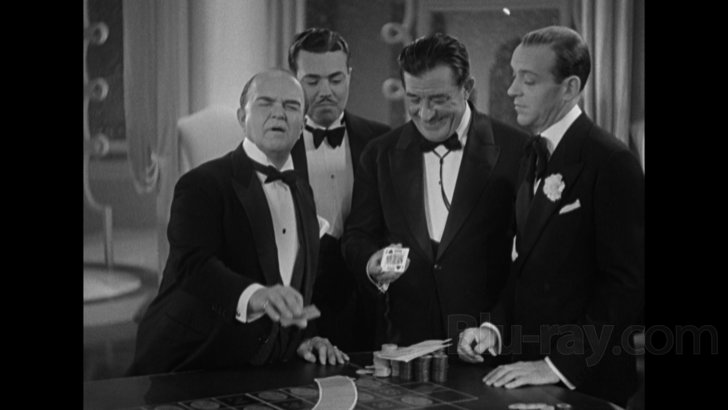
- Ginger Rogers - presented here are two excerpts from archival interviews with Ginger Rogers in which the actress recalls how she was discovered and discusses her professional relationship with Fred Astaire and the different films they made together. The second interview has very interesting comments about George Stevens' working methods as well.
1. Interview One (1980) - in English, not subtitled. (22 min, 1080p).
2. Interview Two (1982) - in English, not subtitled. (5 min, 1080i).
- In Full Swing - in this brand new program, jazz critic Gary Giddins, dance critic Brian Seibert, and Dorothy Field's biographer Deborah Grace Winer the brilliant choreography of the music numbers in Swing Time as well as the chemistry between its two legendary stars. The program was produced exclusively fro Criterion in 2019. In English, not subtitled. (41 min, 1080p).
- George Stevens Jr. - in this new interview, George Stevens Jr., founder of the American Film Institute and son of director George Stevens, discusses his father's career and diverse legacy. The interview was conducted exclusively for Criterion in 2019. (8 min, 1080p).
- Fred Astaire - presented here is a segment from an archival interview with Fred Astaire that was conducted by George Stevens Jr. in 1982. The actor comments on his professional relationship with director George Stevens. In English, not subtitled. (2 min, 1080i).
- Fred Astaire - presented here is a segment from an archival interview with cinematographer Hermes Pan that was conducted by George Stevens Jr. in 1982. Swing Time was his first collaboration with director George Stevens. In English, not subtitled. (5 min, 1080i).
- Fred Astaire - in this new interview, film scholar Mia Mask discusses the blackface and the "Bojangles of Harlem" number in Swing Time. The interview was conducted exclusively for Criterion in 2019. In English, not subtitled. (9 min, 1080p).
- Commentary - this archival audio commentary features John Mueller, author of Astaire Dancing: The Musical Films. It was recorded for Criterion in 1986.
- Leaflet - an illustrated leaflet featuring an essay by critic Imogen Sara Smith, as well as technical credits.
Swing Time Blu-ray Movie, Overall Score and Recommendation 
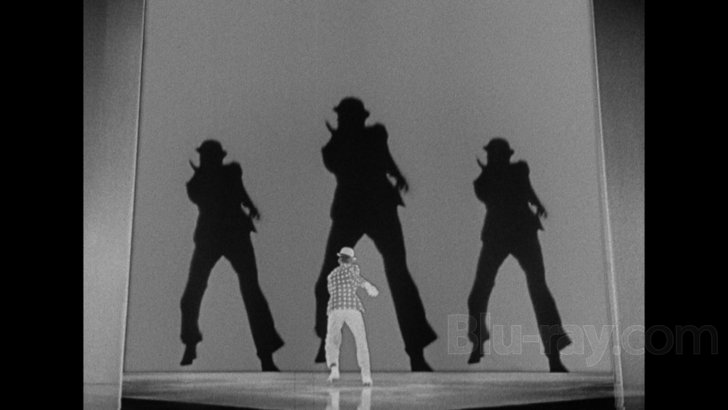
The greatness of Swing Time comes from its ability to convince that what its legendary stars do before the camera is either entirely spontaneous or ordinary. And of course it is not, it is brilliantly choreographed and perfectly executed. Even the tiniest hesitation that you might spot is part of a complete piece that was carefully crafted and then rehearsed to look organic. I tend to agree with the popular opinion that Swing Time is the best of the films that Fred Astaire and Ginger Rogers dd together because the acting and the dancing in it come together magnificently and their chemistry is outstanding. Criterion's recent release is sourced from a very good new 2K restoration of the film. HIGHLY RECOMMENDED.
Similar titles
Similar titles you might also like

You'll Never Get Rich
1941

Top Hat
1935

The Awful Truth
1937

The Gay Divorcee
1934

42nd Street
Warner Archive Collection
1933

Love Me Tonight
1932

In & Out
1997

It Happened One Night
1934

At Long Last Love
1975

The Philadelphia Story
1940

Romance on the High Seas
Warner Archive Collection
1948

High Society
1956

It Started with Eve
1941

Down to Earth
1947

Viva Las Vegas
1964

Mamma Mia! 4K
10th Anniversary Edition
2008

Bringing Up Baby
1938

Bells Are Ringing
Warner Archive Collection
1960

Guys and Dolls
Warner Archive Collection
1955

The Broadway Melody
Warner Archive Collection
1929
